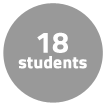This Course at MIT pages are part of the OCW Educator initiative, which seeks to enhance the value of OCW for educators.
Course Overview
This page focuses on the course 21G.711 Advanced Spanish Conversation and Composition as it was taught by Margarita Ribas Groeger in Spring 2014.
Students examined expository and journalistic writing that spotlighted the social and cultural impact of science and technology in Hispanic societies. Some of the topics covered included Internet addiction, ethical implications of technology, genetic manipulation, and alternative energy. The course aimed to improve oral and written skills through discussions of audiovisual materials, simulations, interviews, guided compositions, regular journal writing, and participation in an online forum. Readings included: journalistic reports, essays, and literary selections offering diverse perspectives. The course was taught in Spanish.
Course Outcomes
Course Goals for Students
This class aimed to:
- Develop students’ ability to communicate effectively in Spanish.
- Expand their cultural awareness.
- Expose them to different points of view.
- Deepen the students’ understanding of the Spanish-speaking societies and their relationship to issues of science and technology.
Possibilities for Further Study/Careers
The course was of special interest to students who were planning to pursue an internship in Spain or Latin America through the MIT International Science and Technology Initiative (MISTI), were applying to medical school, were interested in development issues, or were preparing to do field work in Latin America as part of their graduate studies research.
Looking at Spanish-speaking societies through the ways they have been affected by science and technology offered an alternative thematic focus to the fifth or sixth semester Spanish language curriculum, one that was especially relevant and interesting to MIT students.
Below, Margarita Ribas Groeger describes various aspects of how she taught 21G.711 Advanced Spanish Conversation and Composition.
Pedagogy
Using a variety of current and thought provoking materials, such as journalistic texts and video reports, essays, films, and literary selections, the class addressed such questions as: How have new scientific and technological changes affected individuals, communities and relationships, value systems and beliefs, education, work, and the natural world? What are the promises and threats posed by new technologies? What are the existing attitudes towards technological innovation and scientific advances as expressed in the media, public debates, literature and art in Spanish-speaking societies? What are some of the ethical implications of technological decision-making?
Looking at Spanish-speaking societies through the ways they have been affected by science and technology offered an alternative thematic focus to the fifth or sixth semester Spanish language curriculum, one that was especially relevant and interesting to MIT students. At the same time, it offered students the opportunity to reflect on important issues in a wide range of fields, such as biotechnology, alternative energies, and digital technologies, that were also significant for their personal lives, their studies, or their future work.
The pedagogical methods employed in the class served to further the above-mentioned goals. Through activities which emphasized task-based communication, collaboration, role-playing and simulations, students were able to assume different roles, think critically about issues, develop arguments and engage with each other to solve a conflict, find a solution or come to an agreement, while expanding their cultural awareness and improving their communicative skills in Spanish.
Curriculum Information
Prerequisites
- 21G.704 Spanish IV or
- 21G.774 Spanish IV Globalization or
- Permission of instructor
Requirements Satisfied
HASS-H ![]()
Offered
This course is usually offered in the spring semester.
Assessment
The students' grades were based on the following activities:
 30% Attendance and participation
30% Attendance and participation 10% Oral communication homework on Voicethread
10% Oral communication homework on Voicethread 25% Written work
25% Written work 30% Exams
30% Exams 5% Investigative project and oral presentation
5% Investigative project and oral presentationRubrics
Student Information

Breakdown by Year
The class was directed at undergraduate students who had completed at least two years of university level Spanish, or had attained a high-intermediate level of proficiency. Most of the students were juniors or seniors, although this varies from year to year. First year students were in the minority, with just one or two at the most. We typically have one or two graduate students.
Breakdown by Major
The class attracted students of all majors. The graduate students were mostly from the Sloan School of Management, Urban Studies and Planning, or Economics.
During an average week, students were expected to spend 12 hours on the course, roughly divided as follows:
In Class
- Met 2 times per week for 1.5 hours per sessions; 26 sessions total; mandatory attendance.
- Students spent class time participating in a variety of activities including, discussions, lectures, debates, and interviews, among other activities.
Out of Class
Outside of class, students completed several different types of assignments including exercises, regular journal writing, participating in an online forum, reading, and watching films.
Semester Breakdown
| WEEK | M | T | W | Th | F |
|---|---|---|---|---|---|
| 1 |  |  |  |  |  |
| 2 |  |  |  |  |  |
| 3 |  |  |  |  |  |
| 4 |  |  |  |  |  |
| 5 |  |  |  |  |  |
| 6 |  |  |  |  |  |
| 7 |  |  |  |  |  |
| 8 |  |  |  |  |  |
| 9 |  |  |  |  |  |
| 10 |  |  |  |  |  |
| 11 |  |  |  |  |  |
| 12 |  |  |  |  |  |
| 13 |  |  |  |  |  |
| 14 |  |  |  |  |  |
| 15 |  |  |  |  |  |
| 16 |  |  |  |  |  |
 No classes throughout MIT
No classes throughout MIT Class session
Class session Assignment due date
Assignment due date No class session scheduled
No class session scheduled Student presentations
Student presentations Exam
Exam